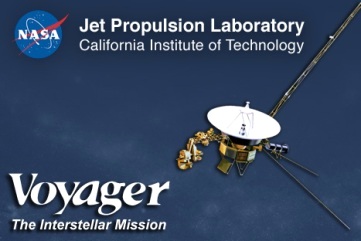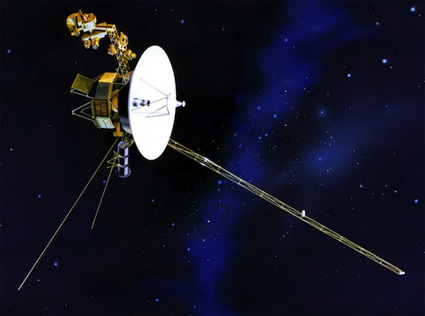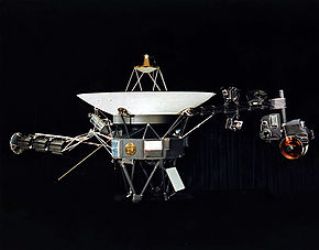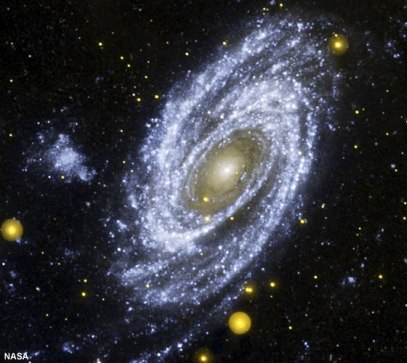

This Month's Oddity in the News:
The First Spacecraft to Ever Leave Our Solar System
IN THE ARCHIVES:
Mammoths
Oswald's Coffin
Raining Frogs
The Real Chupacabra
75-Year-Old Mystery
History of Halloween
The First European
Resurrection of an Extinct Animal
Medieval Vampire Skull

Voyager 1 Spacecraft Leaves the Solar System
The First Spacecraft to Do So!
DISCOVERY MAGAZINE (December 2010)-Into the great unknown, into the wild blue yonder, past the second star on the right and straight on till morning: That’s where NASA’s Voyager 1 is heading. The remarkable spacecraft was launched 33 years ago, and it’s now reaching the edge of our solar system. Within a few years, NASA says, it will enter interstellar space.
Over all those years, there has been one constant in the Voyager flight: the solar wind blowing past it. This stream of subatomic particles leaves the Sun at hundreds of kilometers per second, much faster than Voyager. But now, after 33 years, that has changed: at 17 billion kilometers (10.6 billion miles) from the Sun, the spacecraft has reached the point where the solar wind has slowed to a stop. Literally, the wind is no longer at Voyager’s back.
Read the entire article HERE.
SPACE TODAY-Voyager 1, now the most distant human-made object in the Universe, and Voyager 2, close on its heels, continue their ground-breaking journey with their current mission to study the region in space where the Sun's influence ends and the dark recesses of interstellar space begin.
Voyager 1 is almost 70 times farther from the Sun than the Earth. Out there, the Sun is only 1/5,000th as bright as here on Earth. It is extremely cold, and there is little solar energy to keep the probe warm and to provide electrical power.
The probe can continue to operate at such great distances from the Sun because it has radioisotope thermal electric generators (RTGs) that create electricity. The fact that the spacecraft is still returning data is a remarkable technical achievement.
Read the entire article HERE.

About Voyager
The Voyager 1 spacecraft is a 722-kilogram (1,592 lb) robotic American space probe launched by NASA on September 5, 1977 to study the outer Solar System and eventually interstellar space. Operating for 33 years, 5 months, and 20 days, the spacecraft receives routine commands and transmits data back to the Deep Space Network. It was the first probe to leave the Solar System and is the farthest human-made object from Earth.
Currently in extended mission, the spacecraft is tasked with locating and studying the boundaries of the Solar System, including the Kuiper belt, the heliosphere and interstellar space. The primary mission ended November 20, 1980, after encountering the Jovian system in 1979 and the Saturnian system in 1980. It was the first probe to provide detailed images of the two largest planets and their moons.
See Wikipedia about Voyager HERE.
